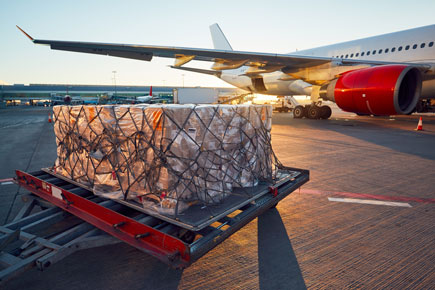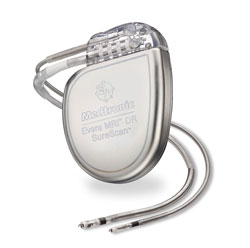A Boeing 757 touches down at Rochester Airport five days per week. Inside are boxes containing more than 35,000 biologic specimens intended for diagnostic testing at Mayo Medical Labs. But sometimes the specimens don’t reach their destination as intended. The culprit? Fog.
Every year, 4 to 12 percent of all inbound flights to Rochester Airport are diverted to Minneapolis–Saint Paul (MSP) International Airport. Specimens like those going to Mayo Medical Labs can spoil, and these delays cost shippers $633,000 each year and result in $5 million in regional economic loss from diverted flights.
These are some of the findings from a recent study by researchers in the Humphrey School of Public Affairs. The team’s report indicates that Minnesota’s medical industry is increasingly relying on airports to ship everything from biologic specimens to high-tech surgical implants.
“Even though Minnesota doesn’t necessarily handle a ton of volume in medical goods, the value of those medical goods is among the most valuable in the state,” explains Travis Fried, who graduated in May from the Humphrey School’s Master of Geographic Information Science (GIS) program. “It makes sense that they’re going by airplane.”
Fried’s work is part of research funded under the U’s Transportation and Economic Competitiveness (TPEC) Program; TPEC director Lee Munnich and researcher Tom Horan are the lead investigators. “This research on Minnesota’s highly competitive health care and medical device industry clusters demonstrates the importance of air transportation in the movement of high-value, time-sensitive freight for medical supply chains,” Munnich says. “This in turn helps us understand the importance of Minnesota’s transportation network to this vital part of Minnesota’s economy.”
Medical goods represent the highest value-per-ton commodity in the state, Fried says. In 2015, pharmaceuticals and precision medical instruments accounted for $52.5 billion in traded goods in Minnesota. Together with electronics, these low-volume/high-value commodities made up over 70 percent of the freight-value moved by state airports. And while the volume of air cargo in Minnesota peaked in 2008, the value of air-transported medical goods has increased by nearly 400 percent.
“Air cargo handles about 3 percent of the volume of merchandise globally but 36 percent of the total value,” Fried adds. MSP handles $8.6 billion annually in medical goods—92 percent of the state’s total.
Hospitals like Mayo Clinic and medical device companies such as Medtronic are turning to air travel for their shipping needs for several reasons, Fried says. Speed is the main advantage. Ordering products as-needed with state-of-the-art “just-in-time” delivery networks reduces the steep cost of maintaining on-the-shelf inventory. Using this approach, Mayo Clinic worked with FedEx, its primary shipping partner, to shrink its inventory by 75 percent, reducing supply chain costs 25 percent.
Minnesota is a hub for medical device company headquarters, and Mayo Clinic is one of the most renowned health care facilities in the world. Mayo’s Destination Medical Center expansion—a 20-year, multi-billion-dollar development project backed by state funding—underscores the importance of improving this crucial supply chain.
State transportation officials are looking at how they can improve the state’s freight systems, including upgrading the instrument landing system at Rochester Airport to help planes land during foggy conditions. “Simple investments that improve resiliency at airport cargo operations are beneficial to the Minnesota medical economy,” says John Reed, executive director of Rochester International Airport.




